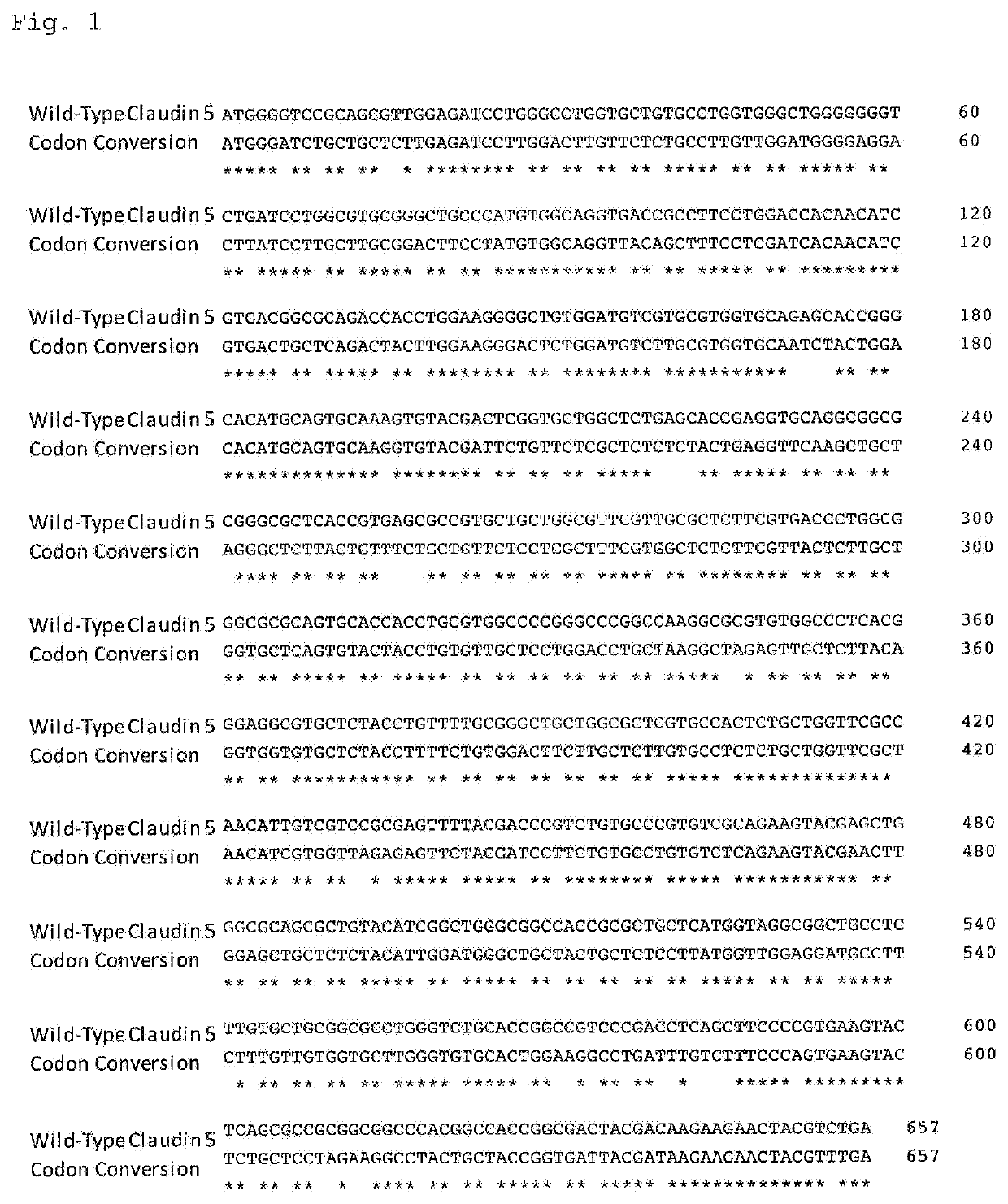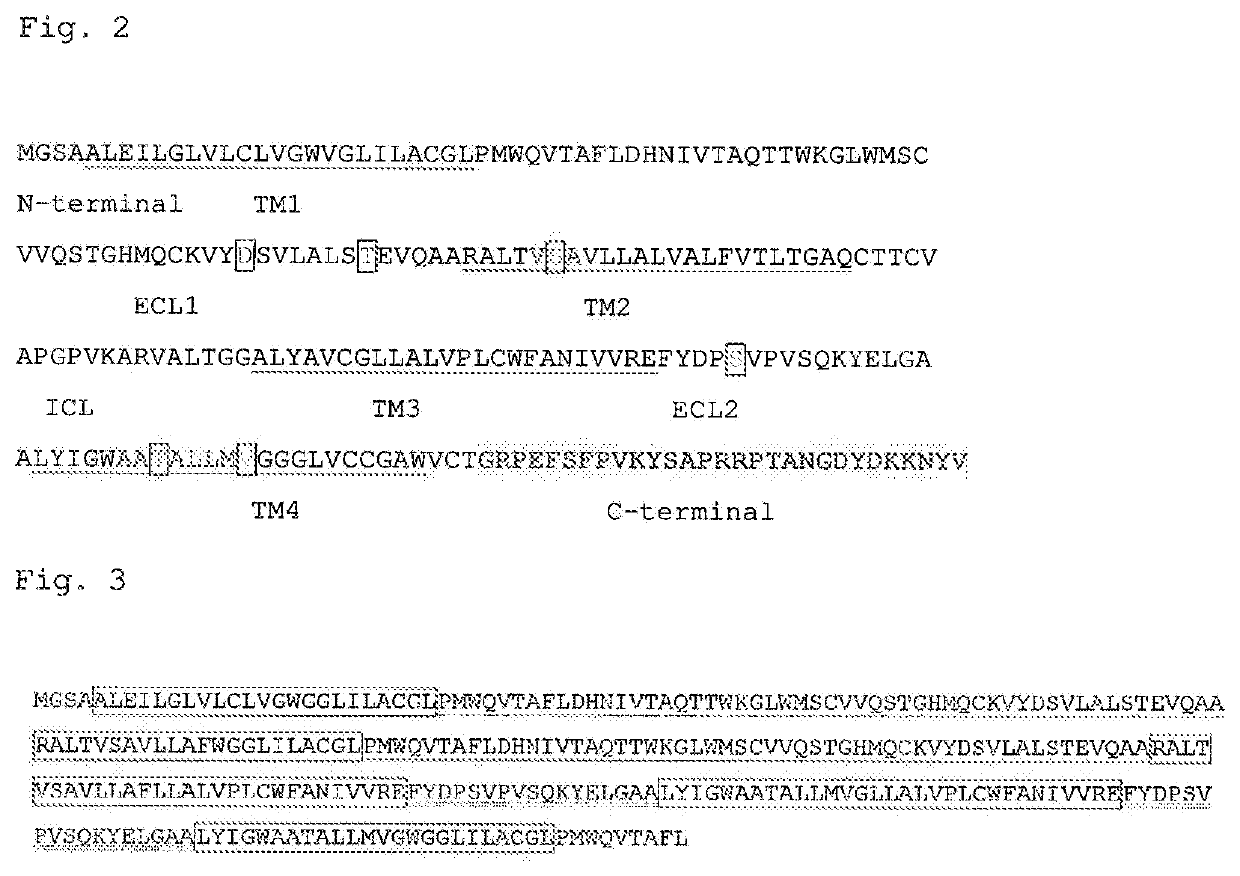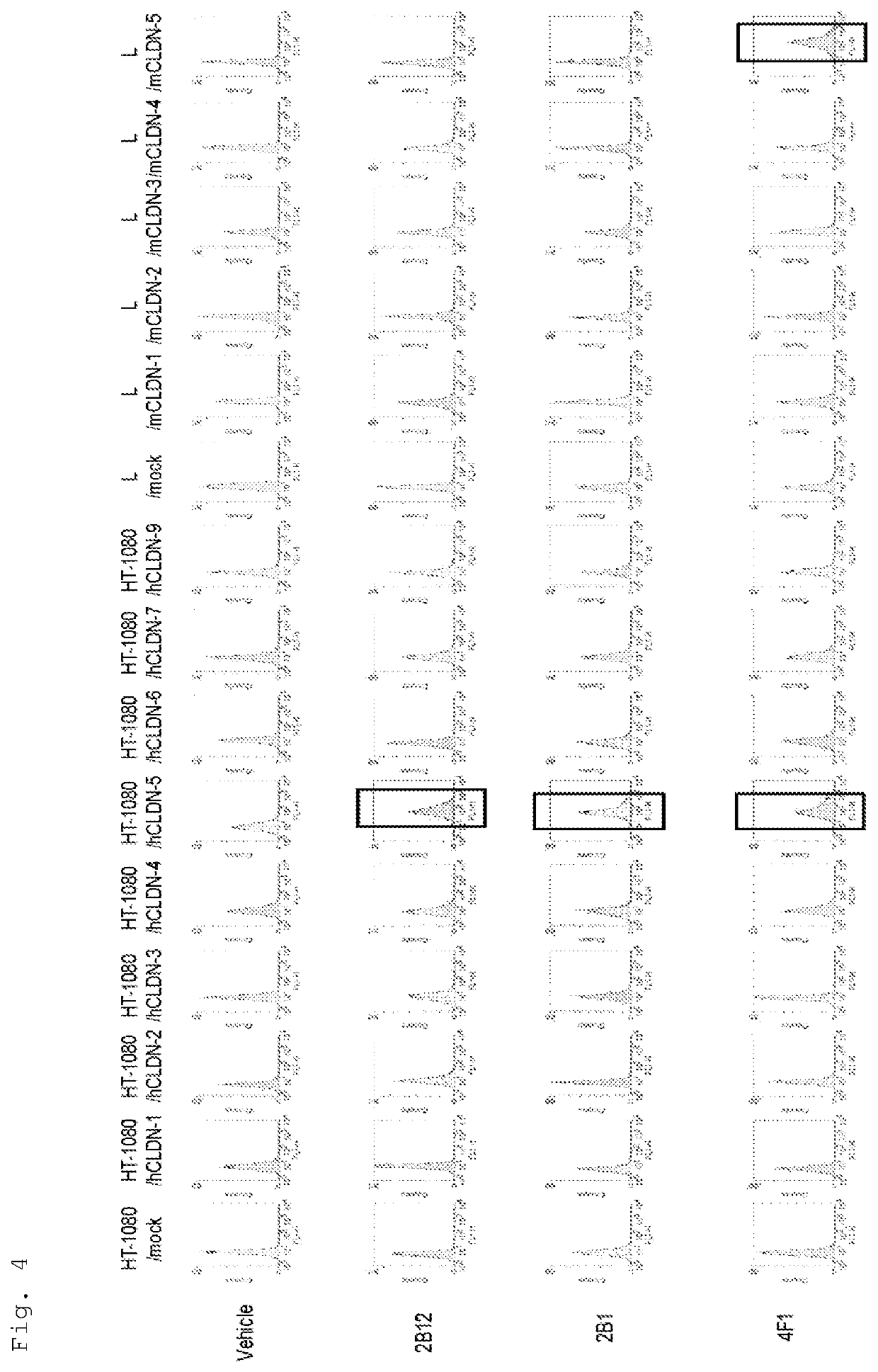Claudin 5 antibody, and medicine containing said antibody
a technology of claudin 5 and antibody, which is applied in the field of claudin 5 antibody and a medicine containing the antibody, can solve the problems of affecting the development of brain diseases, poor binding specificity of molecules to claudin 5 and other claudin molecules, and achieves enhanced preventive or therapeutic effects, high claudin specificity, and high specificity
- Summary
- Abstract
- Description
- Claims
- Application Information
AI Technical Summary
Benefits of technology
Problems solved by technology
Method used
Image
Examples
reference example 1
ens
[0261]Immunogens (proteoliposomes) for use in the production of antibodies were prepared as follows.
reference example 1-1
te Plasmids
[0262]A DNA fragment that encodes a DNA fragment consisting of the coding sequence (SEQ ID NO: 74) of wild-type human Claudin 5 protein (SEQ ID NO: 73), a DNA fragment consisting of the coding sequence (SEQ ID NO: 76) of human-mouse-chimeric Claudin 5 protein (SEQ ID NO: 75), or a DNA fragment consisting of the coding sequence (SEQ ID NO: 78) of extracellular domain reversible Claudin 5 protein (SEQ ID NO: 77) was inserted into a pEU-E01 vector (CellFree Sciences) using the Gateway or Gibson Assembly method to obtain template plasmids.
[0263]In a preliminary experiment, when a base sequence derived from human cDNA was used as a base sequence for a coding DNA fragment of wild-type human Claudin 5 protein, the synthesis of protein was not confirmed. This is probably because a Claudin 5-coding sequence derived from human cDNA has a high average GC-content of 68%; and the GC-content in some regions is even as high as 80%, suggesting that mRNA has a high-order structure, and in...
reference example 1-2
me
[0266]The liposome added to a cell-free system was prepared using a lipid mixture prepared by adding MPLA (Avanti) to egg yolk-derived phosphatidylcholine (eggPC, Wako Pure Chemical Industries, Ltd.). Specifically, a liposome was prepared as described below.
[0267]A solution of 50 mg of phosphatidylcholine and 1.25 mg of MPLA in chloroform was dispensed into an eggplant flask, and mixed. Chloroform was evaporated by rotating the flask with an evaporator, thereby obtaining a thin lipid film. To completely remove chloroform from the lipid film, the flask was allowed to stand in a vacuum desiccator under negative pressure for at least 6 hours. A buffer (SUB-AMIX SGC buffer), which came with a protein synthesis kit (WEPRO7240 expression kit, CellFree Science), was added to the flask to give a lipid concentration of 25 mg / mL; and sonicated (Branson, SONIFIER model 450D-Advanced), thereby preparing a liposome.
PUM
| Property | Measurement | Unit |
|---|---|---|
| concentration | aaaaa | aaaaa |
| concentration | aaaaa | aaaaa |
| pH | aaaaa | aaaaa |
Abstract
Description
Claims
Application Information
 Login to View More
Login to View More - R&D
- Intellectual Property
- Life Sciences
- Materials
- Tech Scout
- Unparalleled Data Quality
- Higher Quality Content
- 60% Fewer Hallucinations
Browse by: Latest US Patents, China's latest patents, Technical Efficacy Thesaurus, Application Domain, Technology Topic, Popular Technical Reports.
© 2025 PatSnap. All rights reserved.Legal|Privacy policy|Modern Slavery Act Transparency Statement|Sitemap|About US| Contact US: help@patsnap.com



